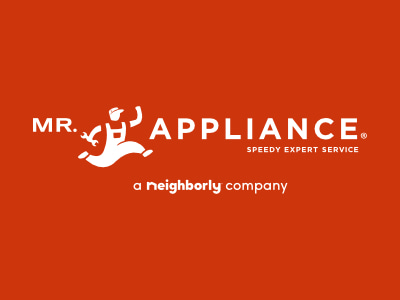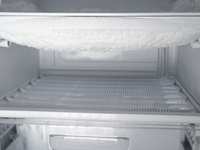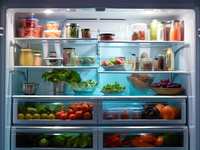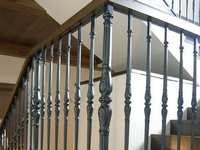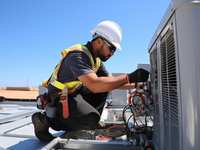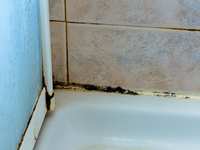- Categories :
- More
Why Is My Oven Not Heating Up?
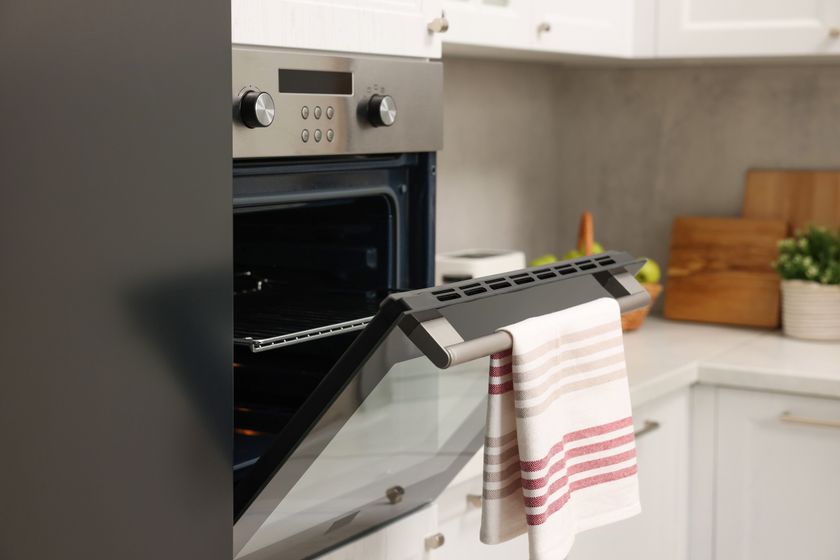
For many, an oven is the heart and soul of a kitchen. Whether you’re baking a sweet pastry or a savory meal, you need your oven to bake your dish to perfection. But what if your oven suddenly stopped heating?
If you’re facing this problem and curious to know why your oven is not heating up, we’re here to help. Let's dive into the common reasons behind this heating hiccup and work together to troubleshoot the problem.
1. Your Appliance Is Unplugged
A common yet often overlooked reason why your oven isn’t heating up is that it might be unplugged. Ovens — like most appliances — need a good power supply to function properly. So, if the cord accidentally comes loose or the power outlet isn’t working, your oven will not warm up as expected.
Troubleshooting tip: Double-check that your oven is properly plugged into the outlet. A securely plugged-in oven means fewer cooking troubles!
2. The Circuit Breaker Is Tripped
A tripped circuit breaker is another reason your oven could be acting up. Sometimes, when there's a surge or overload, the circuit breaker can trip to prevent any electrical mishaps.
Since your oven relies on electricity to warm up, if the circuit breaker trips, your appliance won’t function properly. Resetting the circuit breaker will bring your oven back to life and safeguard against future interruptions.
Troubleshooting tip: Start by unplugging all the devices connected to the circuit. Flip the tripped switch back on, then gradually plug in your appliances and electronics. This reset should help your oven start again. If the problem persists, contact a professional.
3. The Heating Element Is Broken
If the element no longer glows bright orange or you have noticed your electric bills are higher than usual, this could indicate a faulty element. These are all signs that it’s time to replace the heating element in your oven, which should be done by a professional.
Troubleshooting tip: Turn the oven off and inspect the heating element thoroughly. Look for any cracks or blisters. If the heating element looks worn out, it's a sign to have it replaced. Due to the high voltage involved, it's safer to let a service professional handle your oven repair.
4. Your Temperature Sensor Is Misaligned or Damaged
If your food is taking longer than usual to bake or is not baking completely, the temperature sensor may be the reason. The temperature sensor is the oven's thermostat, ensuring the temperature is calibrated correctly for your cooking. If the sensor is not in the correct position or is malfunctioning, the oven will not be able to determine when to start or stop heating, leading to inconsistent heating results.
Troubleshooting tip: Each oven model is built differently, which means the location of the temperature sensor will vary. If you suspect that a misaligned or damaged temperature sensor is the problem, contact your local Mr. Appliance for expert help.
5. The Igniter Is Defective
If your gas oven isn't heating up, it could be due to a faulty igniter. There are a few signs that indicate your igniter needs repair:
- Igniter doesn’t light up: In a gas oven, the igniter typically glows bright orange or yellow when it's working properly. If you don't see it light up when you turn on the oven, it's a clear indication that the igniter is malfunctioning.
- No ignition sound: You will hear a clicking or ticking sound when the gas ignites. If you don't hear this sound, it suggests that the igniter is failing to ignite the gas, preventing the oven from heating up.
- Irregular flame or delayed lighting: If the igniter is weak or failing, it may result in an uneven flame or delayed ignition. If you notice that the oven takes longer than usual to heat up or the flame is not consistent, call a service professional to check it.
Troubleshooting tip: Check the igniter for any visible signs of damage or wear. Look for cracks, breaks, or discoloration. If you see any damage, contact a certified service professional who can provide an accurate diagnosis and ensure a safe and proper replacement of the defective igniter.
6. Your Thermostat Knobs Are Mispositioned
When your oven isn't heating up, it could be because the thermostat knobs are not in the right position. These knobs are responsible for determining the accurate oven temperature. When they’re mispositioned, your oven won't be able to gauge the temperature it is set to reach.
Troubleshooting tip: Make sure the oven knobs are on securely and look closely for any cracks or chips. If the knob is loose or broken, you may need to get a new one. Fortunately, thermostat knobs are usually affordable and easy to install on your own.
7. Your Oven Needs To Be Recalibrated
If the temperature in your oven seems off even after the thermostat proves to be fine, your oven needs to be recalibrated.
Recalibration is the process of adjusting the oven's internal temperature settings to ensure they align accurately with the displayed or set temperature. This process will ensure accurate temperature readings, which reflect the actual temperature inside the oven.
Troubleshooting tip: Most ovens today have an electronic control that can be adjusted to calibrate your oven temperature.
8. The Door Won’t Shut Properly
A loosely shut door is one of the most common reasons why your oven is not heating properly. An oven door that is not completely shut allows heat to escape, so your oven will struggle to reach the right temperature. But why isn’t your oven door closing properly? It could be as simple as built-up debris getting in the way.
In other cases, the door may be broken or damaged, which means it's time to reach out to a professional. They can provide the necessary expertise to fix or replace the door, ensuring your oven is back in action and heating up properly.
Troubleshooting tip: Examine the seal around the oven door for any visible damage or cooking debris. Ensure there are no obstructions preventing the oven door from closing fully.
9. Your Gas Line Is Defective
If there are issues with the gas line, such as leaks, blockages, or malfunctions, it disrupts the gas flow to the oven's burners. This directly impacts the oven's ability to heat up.
An unobstructed gas line not only guarantees that your oven heats up properly but also contributes to a safer and more efficient cooking environment.
Troubleshooting tip: Regular maintenance can help ensure a properly functioning gas line. Ensure your gas line is securely connected. If you see any visible damage or leaks, it's best to contact a professional to handle the repairs.
10. Your Thermostat or Selector Switch Is Not Working
An oven’s thermostat and selector switch work in combination to give you the option to bake or broil. The thermostat acts as the temperature regulator, ensuring the oven reaches and maintains the desired heat for your chosen cooking method.
On the other hand, the selector switch allows you to choose between baking and broiling modes, directing the oven on how to distribute heat. So, if you notice your oven is not heating up, one option is to determine whether your thermostat and/or selector switch are operating properly.
Troubleshooting tip: Examine the thermostat and selector switch for any visible damage or loose connections. Check for any signs of burn marks or corrosion, especially around the electrical contacts. If you notice damage to the thermostat or selector switch, contact an appliance professional for a replacement.
Oven Repair FAQ
Still wondering, “Why is my oven not heating up?” Our experts answer some commonly asked questions about oven repair.
Why Is my oven not getting up to temperature?
If your oven isn't heating up, it may be because the igniter or heating element is damaged or isn’t working properly. Make sure to inspect the temperature sensor for any visible damage and the gas line for any leaks or defects, as an unobstructed gas supply is essential for your oven to heat up effectively.
Why Is My Oven Not Heating Up, but the Stove Works?
Issues with the thermostat, selector switch, or heating element can hinder the oven's heating ability. Additionally, ensuring the gas supply line is intact and not obstructed, if you have a gas oven, is essential for proper heating. If problems persist, seek professional assistance for a thorough inspection and repair.
Can I replace the oven’s heating element myself?
Yes, replacing an oven's heating element can often be done yourself, but it's essential to proceed with caution. Remember to turn off the power and unplug the oven. When in doubt, seek professional help for safety and proper installation.
Should You Repair or Replace a Broken Oven?
Deciding whether to repair or replace a broken oven depends on several factors. You need to consider the extent of the damage, how old the appliance is, and the cost of oven repair.
If the repairs are significantly expensive and your oven is old, replacing it may be a more cost-effective and efficient solution. However, for minor issues and newer appliances, repairs may be a more economical choice.
Looking for appliance repair? Contact us to schedule an appointment with an expert.
Get Your Oven Cooking With Mr. Appliance
A well-functioning oven is essential for a smoothly running kitchen. When your oven acts up or refuses to heat, we’re here to help you resolve it. We understand the importance of hassle-free cooking, and the service professionals at your local Mr. Appliance are here to ensure your appliance meets all your baking and cooking needs.
This article is intended for general guidance only and may not be applicable to every situation. You are responsible for determining the proper course of action for your property and your situation. Mr. Appliance is not responsible for any damages that occur as a result of any advice or guidance derived from blog content. For the most accurate guidance, contact an independently owned and operated Mr. Appliance business for a professional custom and on-site assessment.

